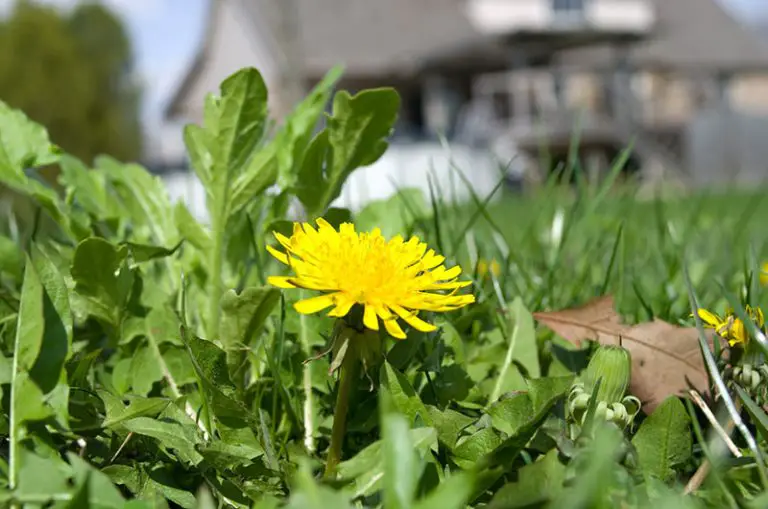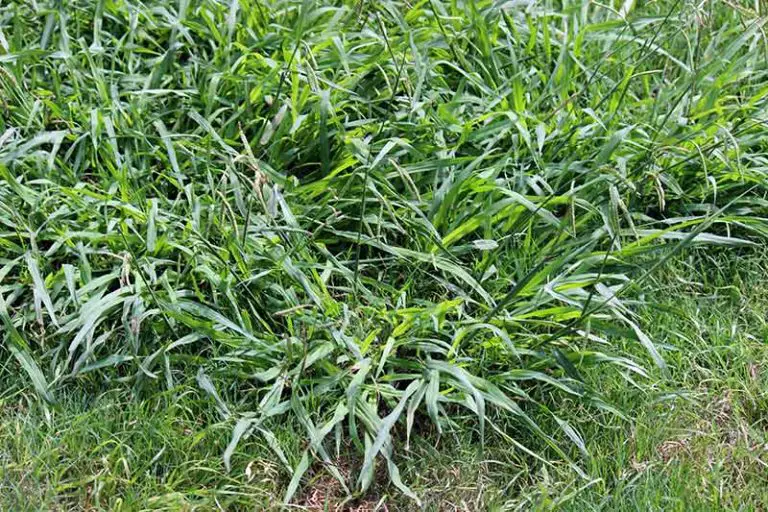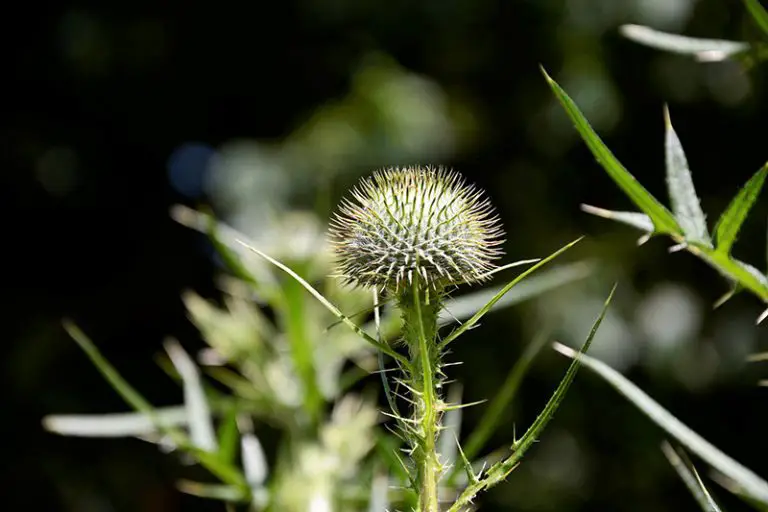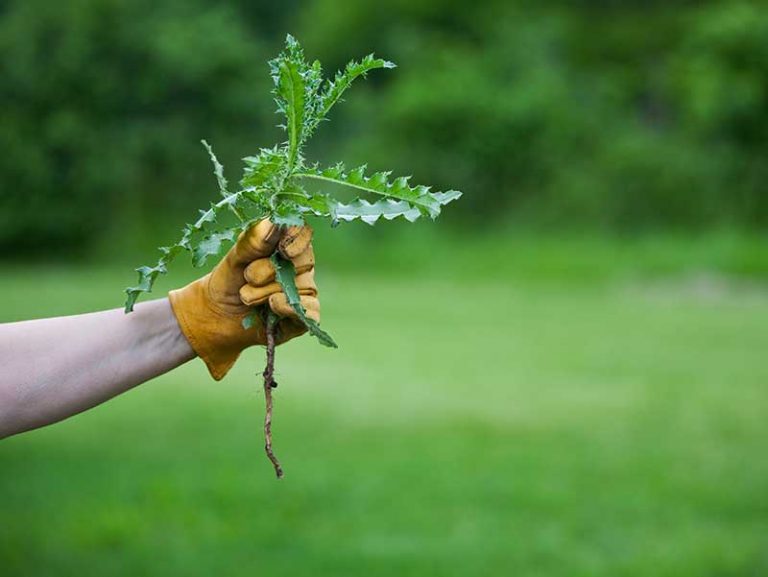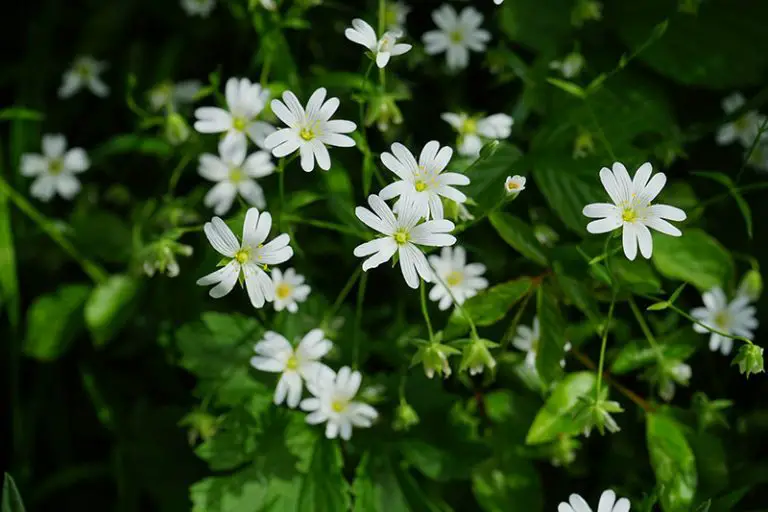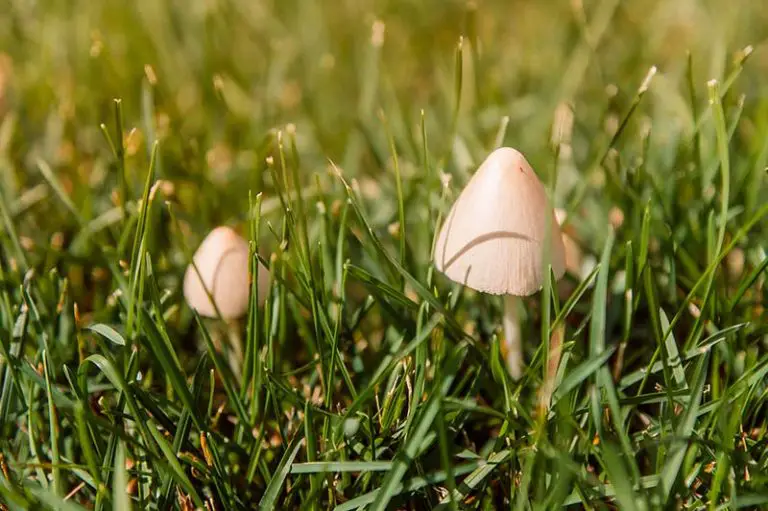Eliminate Weeds Safely: Best Weed Killers for Lawns
In theory, there are a multitude of different methods you can use to kill weeds in your yard. However, when faced with a lawn full of weeds, your options for control are limited; you need to choose a method that will kill the weeds without killing the surrounding grass.
To kill weeds without killing grass, you can either hand-pull the weeds, or treat the lawn with a selective post-emergent herbicide. While hand-pulling will suffice for smaller weed infestations, it will be necessary to use a selective herbicide to tackle a widespread infestation.
Weed Control Methods You Should Avoid Using on Grass
Before delving into the best methods to kill weeds without killing grass, it’s important to note the methods you should absolutely avoid. Selective chemical herbicides, natural herbicides containing vinegar, and any salt-based remedies are all weed control methods that will kill grass.
Killing Weeds with Vinegar
Vinegar is a common ingredient in commercially available organic herbicides and DIY weed killer recipes. Vinegar works to kill weeds due to the acetic acid it contains; unfortunately, the vinegar’s acidic content will also kill grass, making this an unsuitable method of lawn weed control.
With that said, you could risk killing weeds with vinegar in a lawn, providing you take extra care with the application of the treatment. Instead of spraying the vinegar weed killer directly onto the weeds, spray it first onto a cloth or sponge. Then, use the cloth or sponge to wipe the vinegar solution exclusively onto the stems and leaves of the weeds.
Killing Weeds with Salt
Another common ingredient often suggested in natural DIY weed killer recipes is salt. Again, this is an ingredient to avoid as it will kill grass and other garden plants surrounding the weeds.
Not only will the salt kill your grass and plants, but it will also persist in the soil long after application. This will prevent any new plants from growing in the treated area. What’s worse is that water runoff will easily carry the salt to other parts of your yard; this will further increase the risk of damaging your grass or plants. You should therefore avoid any homemade weed killer recipes that contain salt as an ingredient.
Using Selective Herbicides
There are two different types of commercially available weed killers, with formulas either being selective or non-selective. While selective herbicides are ideal to kill weeds without killing grass, non-selective herbicides are not.
Non-selective herbicides, such as those containing the chemical ingredient glyphosate, kill all plant matter indiscriminately. That means that any non-selective herbicide you add to your lawn will kill the grass along with the weeds you’re trying to eliminate. Although you can carefully spot treat with a non-selective herbicide, it’s likely that you’ll end up with at least some dead grass wherever the herbicide transfers unintentionally.
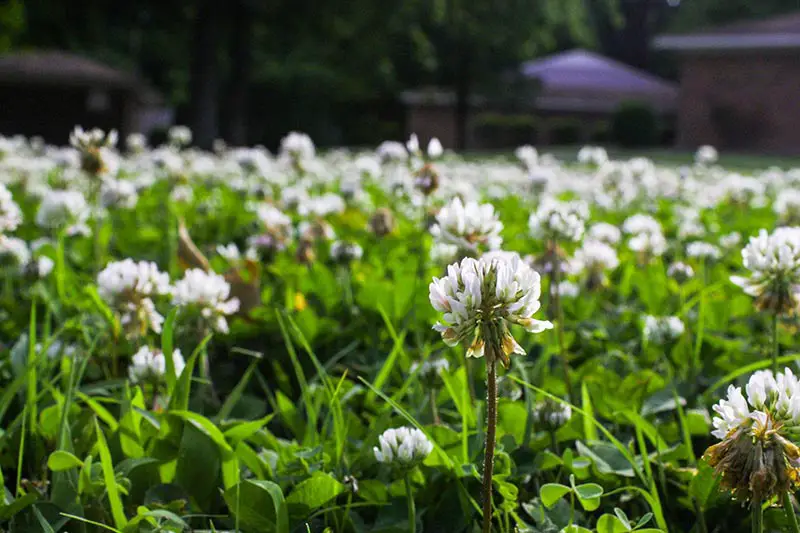
How to Kill Weeds Without Killing Grass
To kill weeds without killing grass, you can either manually remove the weeds through hand pulling, or treat the lawn with a selective post-emergent herbicide.
Manual Removal
For smaller-scale infestations, your first option to kill weeds without killing grass is manual removal by way of hand-pulling. This method is most effective on broadleaf weeds.
Method
1. Identify the Weeds on Your Lawn
You should first take a closer look at the weeds growing on your lawn to identify which type you’re dealing with.
Many weeds, such as dandelions and nutsedge, have incredibly extensive root systems, spreading by underground stems called rhizomes. You’ll need to take extra care with these weeds as the removal of the entire root system is vital to completely eliminate them. It’s therefore beneficial to first identify what type of weed is growing on your lawn before attempting to remove it.
2. Water Lawn
In the days before you remove the weeds, give your lawn a light watering to moisten the soil.
Moistening the soil will help to reduce the labor involved in the hand-pulling process. This will also allow you to remove more of the weeds’ root systems without parts breaking off in the soil; as we’ve explained, this is necessary to reduce the likelihood of reinfestations after the removal of the weed.
3. Put on Gardening Gloves
Although this step isn’t absolutely necessary, it’s a good idea to put on a pair of gardening gloves before hand-pulling. Long-sleeved shirts and long pants are also advisable protective wear.
Many types of weeds have thorns or prickles that can cause a lot of pain when they come into contact with your skin. The worst of these weeds include sticker weeds and thistles; other weeds like poison ivy and stinging nettles will also cause a lot of irritation on contact. We would therefore recommend that you put on full protective clothing before handling any weeds manually.
4. Dig into Soil Around Weeds
Using a sharp spade, trowel, or dandelion digger, dig down into the soil alongside the roots or taproot of the weed. Use your tool to loosen the soil around the weeds’ root system.
5. Pull Up Weeds and Roots
With your tool still in the soil, use your other hand to grasp the weed as close to the base of the plant as possible.
Pull on the weed gently but firmly, using your tool to pry it out of the soil. Take care not to break off any parts of the root system in the soil. As you remove the plant matter, place it straight into a garbage bag. Dig out any remaining roots or plant matter left behind from the weeds before moving onto the next step.
6. Dispose of Weeds
Dispose of the weeds instead of placing them on your compost pile. If you try to incorporate the weeds into your compost, you will only trigger a reinfestation when you use the compost in your yard.
7. Amend and Overseed Lawn
Even though this method won’t kill grass, you’ll still be left with some bare spots after removing the weeds. You can fix any bare patches on the lawn by amending and overseeding the soil.
Smooth the soil in the areas where you removed the weeds, before top-dressing the lawn with a layer of compost. Then, overseed the lawn with the best grass for overseeding according to your current grass type. Water the new grass immediately, maintaining moisture in the planting through regular daily watering throughout the next 2 weeks.
After 2 to 4 weeks, your grass seed will finish germination. At this stage, you can mow after overseeding without damaging the young grass. You can then move on to taking further measures to prevent weeds in your newly seeded lawn; we explain these later in the article.
8. Repeat As Necessary
It’s likely that you won’t be able to remove every part of the weeds in one go; i.e., you’ll most likely see a reinfestation after hand-pulling. Keep repeating these steps until you stop seeing new weed growth on your lawn; with enough pulling, you’ll eventually eradicate the weeds entirely.
Treat Lawn with Selective Herbicide
For more extensive or persistent infestations, the more effective method to kill weeds without killing grass is to use a selective herbicide. These herbicides are specially formulated to only kill certain weeds without causing any harm to the surrounding grass.
Method
1. Identify Weeds on Lawn
Before being able to choose an appropriate herbicide, you’ll need to identify the type of weeds growing on your lawn.
Some weeds only respond to herbicides for broadleaf plants, while others require a product for grassy vegetation. Also, for some types of weeds, there are no selective herbicides available. It’s therefore crucial to know what type of weed you’re dealing with to be able to pick a product that will work.
2. Purchase Appropriate Selective Herbicide
After identifying the type of weed on your lawn, purchase a suitable selective systemic herbicide.
The ideal herbicide to permanently get rid of weeds without killing grass is one that works both selectively and systemically. As we’ve mentioned, selective weed killers will only kill weeds, not grass. The systemic element of the weed killer means that it will work its way down the roots of the weed; this ensures total plant death, reducing the likelihood of reinfestations after treatment.
3. Apply Selective Herbicide to Lawn
Apply your chosen selective systemic herbicide to your lawn.
Although the herbicide won’t kill your grass, it’s still best to only spot treat the weeds where they’re growing. Refer to the instructions on the packaging of your specific product for safety and application guidance.
4. Wait 4 to 14 Days to See Results
Most herbicides will start working overnight to begin killing the weeds. It typically takes between 4 and 14 days for selective herbicides to take full effect in eradicating an infestation.
5. Repeat Applications as Necessary
Repeat applications of the systemic herbicide as necessary if you notice any regrowth in the months following treatment. This shouldn’t be necessary, however, as systemic herbicides are typically highly effective to kill weeds after one application.
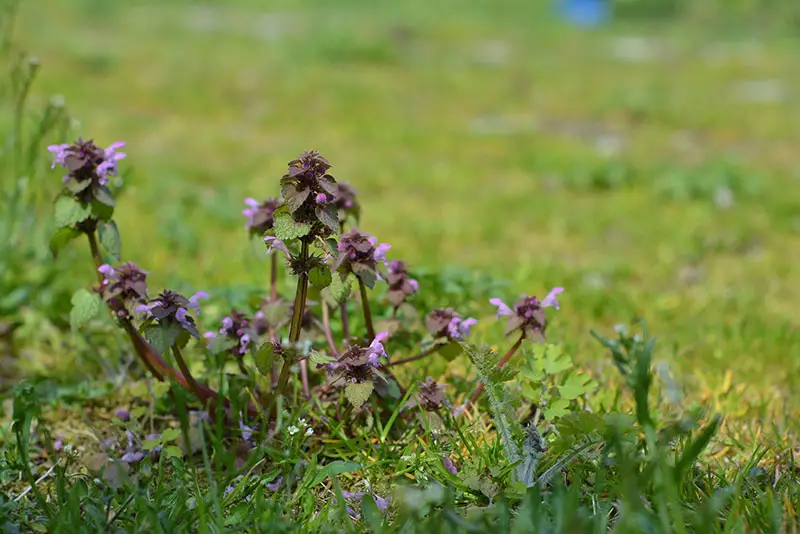
How to Prevent Weeds in Lawn
The best line of natural defense to prevent weed growth in a lawn is to maintain thick, healthy grass. This involves keeping up with proper aeration, fertilization, and watering practices. You can also prevent weeds in a lawn by adding a layer of mulch or treating the soil with a suitable pre-emergent herbicide.
Aerate Lawn As Necessary
Over time, it’s natural that the soil in your lawn will become compact from external influences like traffic and the weather. You need to incorporate aeration into your annual lawn care routine to reduce this compaction in the soil.
If you neglect to aerate your lawn, your grass plants will suffer, and the lawn will be more susceptible to weed growth. A huge number of weeds actually thrive in compact, dry soil. Your lawn will therefore be a lot more prone to weed infestations if it becomes overly compact.
Compaction occurs as a result of heavy usage from people or cars, dry conditions, and is more common in clay-heavy soils. If you fit any of these circumstances, you should consider aerating every year. Sandy soils, on the other hand, are much less prone to compaction and will require less frequent aeration. The best time to aerate your lawn is during a period of active growth for your grass type.
The best method of aeration is core aeration; this involves using a core aerator to punch plugs of soil from your turf. The holes left behind from the process allow the better circulation of air, water, and nutrients. As a result, the aeration process will generally improve the health of your lawn, making it more resistant to weed growth.
Overseed Lawn
You can keep your lawn looking green and thick and free of weeds by overseeding it once or twice per year. This is the process of adding new seed to your mature grass to thicken up the lawn or repair bare patches of soil.
The best time to overseed your lawn is during the active growth period for your grass type. For warm-season grasses, overseed in the late spring to early summer; for cool-season grasses, you can overseed in the spring and fall. It’s also possible to seed cool-season grasses in the late fall to winter using a process called ‘dormant seeding’.
To enhance the results of both processes, you should both aerate and overseed your lawn. While it is possible to overseed without aerating, you’ll see better results by carrying out both processes. Wait 2 to 4 weeks before you mow after overseeding for the first time.
Fertilize Lawn Properly
Through fertilization, you can provide your grass with the ideal balance of nutrients to sustain its healthy growth. However, there are some easy mistakes to make with fertilization that can lead to weed infestations; for instance, fertilizing at the wrong time, or using too much or too little fertilizer.
To prevent weeds, you need to fertilize your lawn at the right time. The best time to fertilize your lawn will depend on your grass species and the area in which you live. For cool-season lawns in the north, the best times to fertilize are in the early spring and the fall; for warm-season lawns, it’s better to fertilize in the late spring to early summer. Fertilizing at these times ensures the nutrients go straight to your grass plants and not to any developing weeds.
Thick grass is one of the best ways to prevent weeds in a lawn naturally. To keep your lawn free of weeds, fertilize no more than 2 to 4 times throughout the year. It’s best practice to first test your soil before choosing the best fertilizer ratio for your grass.
Water Lawn Properly
As weeds thrive in both overly wet and overly dry soils, watering your lawn properly will help to minimize infestations. You need to give your lawn the right amount of water at the right time.
Most grass types require 1 to 1.5 inches of water per week. You should add this amount of water to your lawn in 1 to 2 watering sessions per week. Deeper, infrequent watering will encourage your grass to grow deeper roots, strengthening the lawn against invasive lawn weeds. The best time to water your lawn is in the early morning, between 6am and 10am.
Mulch Lawn
Weed control is one of the many benefits that adding a layer of mulch can bring to your lawn. This is also a method you can use to suppress weeds in garden beds, on patios, along walkways, and any other areas of soil in your yard.
A layer of mulch helps to control weeds by blocking sunlight from reaching the soil surface. This prevents sunlight from reaching weed seeds, in turn preventing the seeds from germinating in the soil. On top of this, the mulch layer provides additional benefits like water retention and temperature control in the turf. As a result, your grass will be generally stronger and more resistant to the spread of invasive weeds.
There is a variety of materials you can use to make mulch, including straw, grass clippings, leaves, and compost. Organic mulches such as those aforementioned are the best type of mulching materials to use; the organic materials will gradually decompose, acting like a slow-release fertilizer by supplying your grass with nutrients over time.
Treat Lawn with Pre-Emergent Herbicide
Another type of weed killer that won’t kill grass is pre-emergent herbicide. These herbicides are specially formulated to kill weed seeds before they germinate, preventing them from establishing themselves in your lawn.
You should treat your lawn with pre-emergent herbicide before the growing season of the weeds you’re trying to prevent. Take note that pre-emergent herbicide will also kill grass seed; avoid using this treatment before or after newly seeding your lawn.

